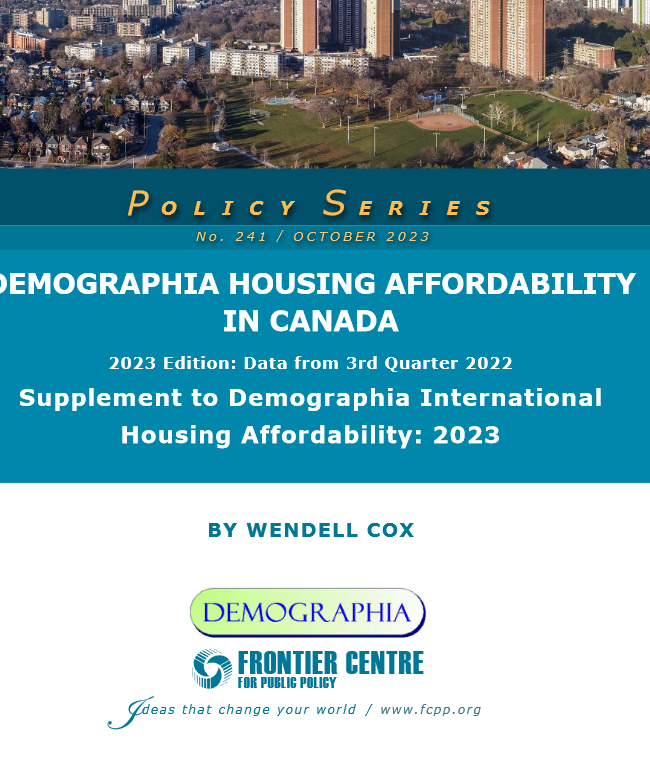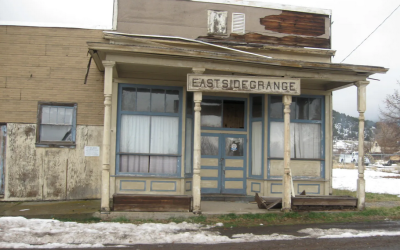EXECUTIVE SUMMARY
Demographia Housing Affordability in Canada assesses middle-income housing affordability (Section 1) in 46 markets.
Housing affordability is more than house prices—it is house prices relative to income. Price- to-income ratios are frequently used to evaluate housing affordability. They have been used by the World Bank, the United Nations, the Organization for Economic Cooperation and Development, and the International Monetary Fund and other organizations. Demographia uses the “median multiple,” which is the median house price divided by the pre-tax median household income.
In Canada, Australia, Ireland, New Zealand, the United Kingdom and the United States, price-to-income ratios were at or below 3.0 as late as the early 1990s. Demographia uses the median multiple housing affordability ratings in Table ES-1.
Housing Affordability in Canada: The Context
Among the six major markets (now over 1,000,000 population), housing remained comparatively affordable from 1970 to the mid-2000s, though the Vancouver market had become severely unaffordable by 2005. Since the mid-2000s, however, housing affordability has deteriorated even further.
Housing Affordability in 2022
In 2022, there were 24 “severely unaffordable” housing markets out of the 46 rated. This is up from 18 in 2019. There are only three “affordable” markets, which is down from eight in 2019. The housing affordability ratings are summarized in Table ES-2. Affordability ratings by housing market are shown in Table 4 (alphabetical) and Table 5 (by housing affordability), both in the report proper.
During the pandemic there has been an important trend toward working at home (“telecommuting”), and many households entered the housing market, seeking more living space (both inside the house and outside). This has resulted in a “demand shock” that worsened housing affordability. The demand for housing rose faster than could be readily supplied by developers and builders.
Severely unaffordable housing is concentrated in British Columbia and Ontario. By far the most severely unaffordable major markets are Vancouver and Toronto, which are also rated the third and tenth least affordable among the 94 markets in Demographia International Housing Affordability in 2022.
Severely unaffordable housing has spread beyond Vancouver to other British Columbia markets and beyond Toronto to other Ontario markets. Net interprovincial migration has increased away from Vancouver and Toronto, while the other markets have gained, as households have sought more affordable housing.
Four markets remain affordable: Moose Jaw (SK), Fort McMurray (AB). Saguenay (QC) and Fredericton (NB).
From Despair to Opportunity
Over the past year, various analyses of the Canadian housing market have suggested that there is little hope to solve Canada’s housing crisis in a manner that would produce affordability and restore the Canadian Dream of home ownership. There are concerns about the daunting extent of the need, the capacity of the home building. Yet, Canada has a strong home building and land development industry, which some of the largest companies in the world. Canada’s housing affordability crisis has been building for decades and will take time to resolve.
The problem is that urban containment regulation has driven the price of land so high that commercial interests cannot any longer supply housing to a large portion of the middle income households. This is not surprising, because raising land prices was an intention of urban containment. Land costs differ markedly between markets and are responsible for the largest differences in housing affordability.
Despite the planning orthodoxy to the effect that middle-income households now prefer to live in apartments rather than houses and in high densities, Canadian households are more attracted to detached and other ground oriented housing.
Higher housing prices, by definition, intensify inequality. Public policies, such as urban containment, drive up the price of land result leading to government induced inequality.
There are alternatives that can restore housing affordability. At this time, the priority being selected by many is migration to much more affordable housing markets. The unprecedented migration of people away from the larger CMAs to the census agglomerations (CAs) as well as to rural areas demonstrates the attractivenss of this alternative.
So long as there are markets that are more affordable, such as in the Prairies and the Maritimes, households will be able to move to improve their standard of living. As more households move to more affordable markets, demand could be reduced in British Columbia, Ontario and the Montreal area, leading more affordable housing in these markets.
However, unless today’s more affordable markets remain more affordable, they, like the now severely unaffordable peripheral markets of British Columbia and Ontario are likely to become severely unaffordable. This would foreclose the opportunity for home ownership among future generations, also making Canada a less attractive international migration destination.
Download the completed PDF Demographia Housing Affordability In Canada Report here: FC-PS241_DemographiaCox_OC0823_D4
Read the media release here.
Wendell Cox is a Senior Fellow at the Frontier Centre for Public Policy. He is principal of Demographia.com, author of Demographia World Urban Areas and an author of Demographia International Housing Affordability (19 annual editions) and Demographia World Urban Areas. He earned a BA in Government from California State University, Los Angeles and an MBA from Pepperdine University. He served as a visiting professor at the Conservatoire des Arts et Metiers in Paris, a national university.



